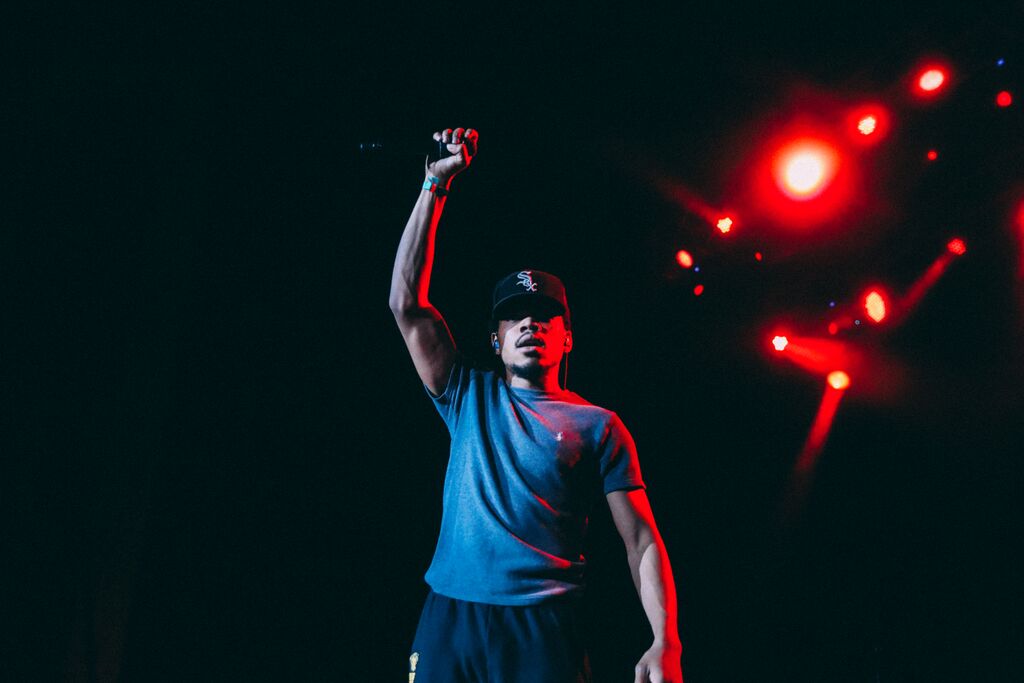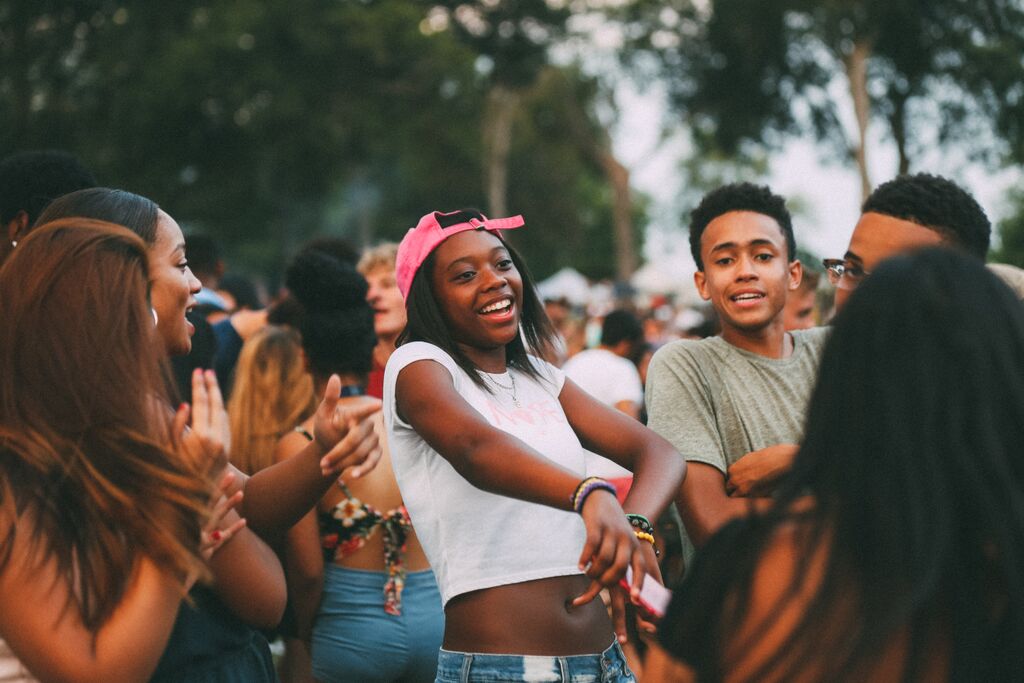 In my last post I talked about the lessons we could learn about audience engagement from Trillectro 2015, but after publishing the post I realized I had more questions about what goes into live-tweeting a large-scale event. In my professional life I have live tweeted conferences, hill briefings, and speeches but nothing as large as a music festival. So, I did some homework and got in touch with the social media team for this year's Trillectro festival: Ramya Velury, Heather Cromartie, and Ahad Subzwari. I talked with them about what live-tweeting for events and what they learned from running social media for this year's festivities.
In my last post I talked about the lessons we could learn about audience engagement from Trillectro 2015, but after publishing the post I realized I had more questions about what goes into live-tweeting a large-scale event. In my professional life I have live tweeted conferences, hill briefings, and speeches but nothing as large as a music festival. So, I did some homework and got in touch with the social media team for this year's Trillectro festival: Ramya Velury, Heather Cromartie, and Ahad Subzwari. I talked with them about what live-tweeting for events and what they learned from running social media for this year's festivities.
How did you approach your social media strategy and what were your goals?
Ramya Velury: To be direct and immersive as possible. As much as Trillectro is about the talent, I think we wanted to ensure that it was about the diverse fans and attendees too. The goal was to make Trillectro a topic of digital conversation. As simple as it sounds, it wasn’t necessarily about making it “trend” on social media, but making sure it was experiential as it possibly could be.
Heather Cromartie: I wanted to capture the diverse range of attendees this year. As soon as I would capture people enjoying the festival with their friends I would enable the wifi on my camera and send the images out to Ramya so that they could be posted right away.
Ahad Subzwari: I think it’s most important to tell stories. Everything people want to consume tells a story. The goal was to be as broad as possible, show all aspects of the festival. And as Ramya mentioned, immersion is extremely important. It’s easy to just post photos of what’s happening, but capturing moments and relaying them to an audience is much better.

When live-tweeting an event, you have to keep in mind what story/narrative you want to tell on social media. What was the story you hoped to tell about Trillectro?
RV: It’s only 4 years old, but Trillectro has provided a platform for so many new artists who are reaching new heights in their careers. Everyone who is apart of Trillectro/DCtoBC, from Modi to Greenwood, has an amazing taste in music with a close in ear on budding talent. Part of relaying Trillectro’s story is about harmonizing this new talent with the established ones, making it as detailed as possible.
HC: I would agree with everything that has already been said. I think it was important for us to capture how much the festival has grown and how our audience is shifting and expanding with each passing year.
AS: The story to tell is about growth, discovering new things, and the emotions of a festival. Trillectro has grown, its audience has grown, and the diversity of the lineup has as well. We also wanted to show everyone who the artists we brought really are. Focus on capturing their emotions on and off the stage and also show how people react to the music in front of them. Emotions last a millisecond so it’s vital to be on the lookout for everything that’s happening.

What were some of the challenges of live tweeting such a big event?
RV: Being in two places at once! It’s also easy to get sucked into reiterating the line-up or general tweets because you’re trying to push out as much content as possible. Additionally, making sure you’re aware of things going on outside of the festival too, like if an artist decides to drop an album before they go on stage or something.
HC: I think the most difficult part of live tweeting an event as large Trillectro is keeping things organized. Ahad and I were shooting with wifi enabled cameras which made pulling images to post, incredibly seamless.
AS: Getting high quality images and having all the right content is tough. Our biggest assets this year were having a diverse team of photographers who were constantly moving, cameras with WiFi that can get pictures up ASAP, and a team that’s on the same page. At times words were not even necessary; things just got done.
What did you do to ensure that your attendees participated on social media as well? (using the hashtag, posting pics, etc).
RV: In addition to the hashtag, geo-tagging, posting photos, tweeting, it was important to INCLUDE them in the conversation too. On Twitter, we responded to them and RT’ed them and on Instagram we posted a lot of crowd photos to gauge their interest.
HC: The energy on the lawn was so alive that I honestly just told people to follow us on instagram for more updates, after I snapped their picture. Since I wasn’t spending much time on our social throughout the day, it was the quickest and easiest way for me to spread the word while I ran around gathering content. While we may not be able to post every single crowd photo, we will be able to direct those users to the correct platforms where they can see all of the images from the da
AS: Having photos going up in real-time was the main part of our strategy. We really sought out those moments, as I mentioned earlier, and it was important to have posts go up as close to real-time as possible. When people can see what’s happening on Twitter, as it’s happening, it adds more value. If they see three of their friends post a picture of Kehlani and we have a super high quality image at the same time, it adds to the experience. Also focused on getting attendees on social platforms because who doesn’t love seeing photos of themselves.
What do you hope people gained from your content?
RV: FOMO-- Fear of Missing Out!!-- The photography was amazing and captured the festival accurately. There really wasn’t a dull moment and those that weren’t there, could feel it.
HC: In my opinion, the content gets pushed to shed light on something that people are either already hip to, or are hearing about for the first time. The images shared to our instagram cater to an audience that was already following the festival. The images shared and re-shared on twitter help to spread the word to people who may not be tracking our movements on instagram.
AS: FOMO really is the best way to put it. We wanted to show the festival from all aspect - an “in case you missed it” of sorts. The festival was much bigger this year, so it there were some things that were missed. We made sure to capture it all and have it in a streamlined feed.
What were some lessons you learned from running social for Trillectro 2015?
RV: Staying consistent to the strategy- posting, copy and content.
HC: It’s important to keep things moving throughout the day. It’s important to keep the copy clever and concise, while still engaging the audience.
AS: Accurately capturing the tone/mood/vibe of the day is vital.
Thank you to Ramya, Heather, and Ahad for agreeing to this interview. If you missed Trillectro this year, put it on your to-do list next summer!
 This week I had the opportunity attend Zeta Phi Beta Sorority, Inc.'s Congressional Black Caucus forum on improving images of Black women in the media. It was a lively discussion that raised a lot of questions about not only the media images Black women are chosen--and sometimes choose--to portray but also which images we choose to consume.
This week I had the opportunity attend Zeta Phi Beta Sorority, Inc.'s Congressional Black Caucus forum on improving images of Black women in the media. It was a lively discussion that raised a lot of questions about not only the media images Black women are chosen--and sometimes choose--to portray but also which images we choose to consume.

